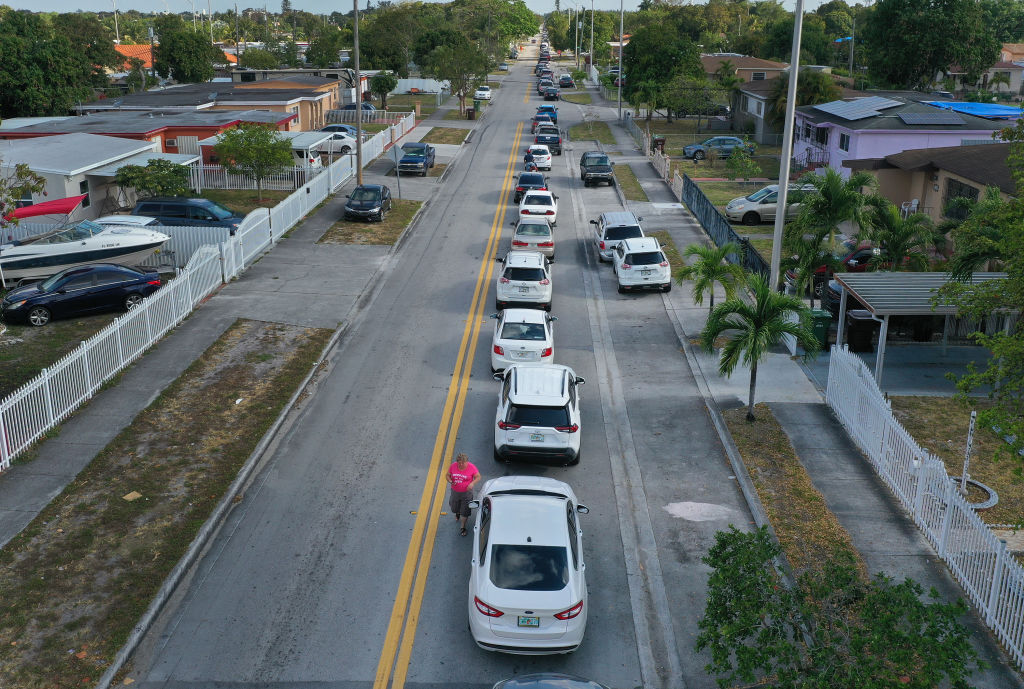Over the last month, most of America has been shut down to reduce the spread of the coronavirus. For the most part, efforts to prevent our medical system from being overloaded have been successful. Now it’s important to focus on another important issue: the employment curve. In the first week of April, over 6.6 million Americans claimed unemployment benefits, the highest amount in history. That figure nearly doubled from week-to-week. As businesses shutter to combat the virus, experts believe that unemployment has nowhere to go up but up. The St Louis Federal Reserve predicts that unemployment could ultimately peak at 32 percent: that amounts to 47 million Americans out of work. Rampant unemployment at a level not seen since the Great Depression could spur other health issues, including alcoholism and depression.Right now, the solution experts are offering is quarantining and social distancing. But those measures could end up being as devastating as the disease, especially if it goes on for months on end. This doesn’t mean we should put Americans at risk of contracting the virus and dying from either the coronavirus or related illnesses that are exacerbated by COVID-19. Yet leaders need to consider the effects of the economic curve as often as they look at stopping the spread of the virus by flattening the coronavirus curve. The unemployment numbers shouldn’t surpass the coronavirus curve. If they do, we’ll have to address a host of other problems that result from poverty, addiction, and widespread unemployment. Those focusing only on the virus forget how many people living paycheck to paycheck are put at risk by the current economic consequences, as well as the side effects for people living with emotional problems, mental illness and drug dependency.In the wake of Indiana’s shutdown, the number of calls from people regarding their mental health to the state’s 211 hotlines increases from 1,000 calls per day to 25,000. Their addiction hotline saw a rise from 20 calls per week to 20 calls per day. The longer the shutdown goes on, the worse this situation may become, creating a host of new health-related issues.President Trump has wisely been focused on both and anxious to restart the economy. Still he cannot stand alone. Those at the local level including governors and mayors need to consider how to reset the economy without worsening the crisis. This includes investing in state unemployment systems, which are currently being overwhelmed and protecting jobs that are essential to an economic rebound which will be needed in the future.Leaders need to determine how best they can keep our medical systems from overload, protecting vulnerable populations, while at the same time preventing an economic depression. Different nations around the globe are taking various approaches to this issue. In Germany, researchers want to distribute hundreds of thousands of test kits that determine if someone is carrying the antibodies for the coronavirus. Those carrying the antibodies would be less likely to get re-infected and will be issued certificates allowing them to leave the quarantine and get back to work. Germany could issue about 100,000 of these certificates in the early part of this month, according to some reports.While this may not be a solution for the US as a whole, it could help be beneficial in cities with large outbreaks like New York, New Orleans, Detroit and their surrounding metropolitan areas. A different solution may be offered for rural and exurban communities who have not had the same extent of outbreak as those cities.Older people and individuals with other health complications are more at risk from the virus then those that are younger with a clean bill of health. The elderly and frail who are most at risk should be ordered to stay at home. But those with no complications who are less at risk should be able to go back to work with social distancing, masks and more stringent rules about hand cleansing. Now that we’re managing the situation across the country and working on stunting the coronavirus curve, efforts must be made to halt the unemployment curve. The ramifications for ignoring one in exchange for the other may bring the same dire consequences to communities most at risk or even those that face limited risk today.Jim Renacci was the US representative for Ohio’s 16th district from 2011 to 2019.
What about flattening the unemployment curve?
Rampant unemployment at a level not seen since the Great Depression could spur other health issues, including alcoholism and depression

Cars line up for unemployment applications in Hialeah, Florida
Over the last month, most of America has been shut down to reduce the spread of the coronavirus. For the most part, efforts to prevent our medical system from being overloaded have been successful. Now it’s important to focus on another important issue: the employment curve. In the first week of April, over 6.6 million Americans claimed unemployment benefits, the highest amount in history. That figure nearly doubled from week-to-week. As businesses shutter to combat the virus, experts believe that unemployment has nowhere to go up but up. The St Louis Federal Reserve predicts that unemployment could…

















